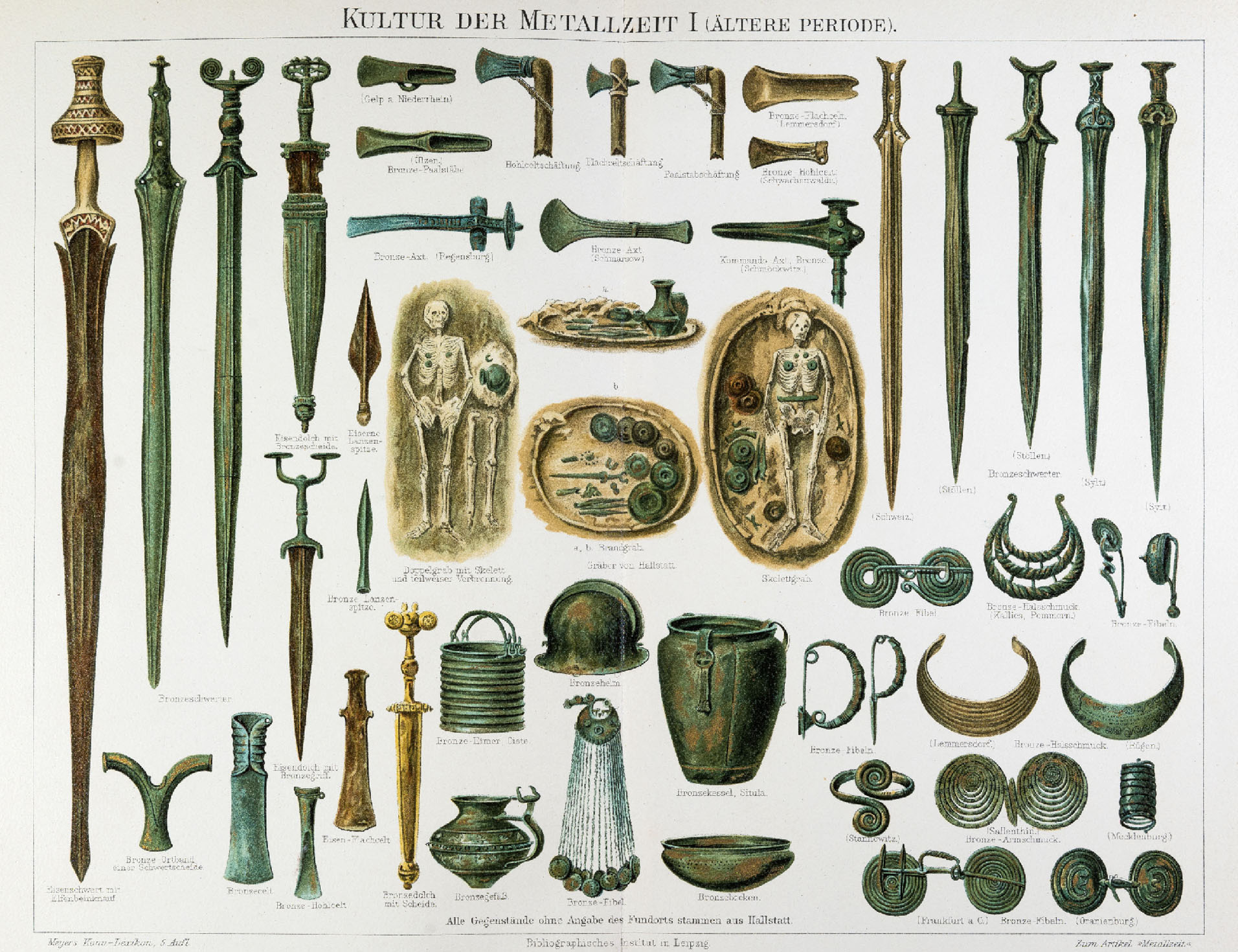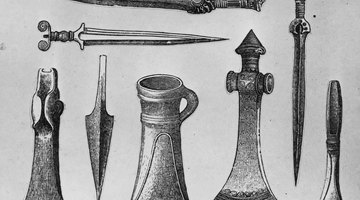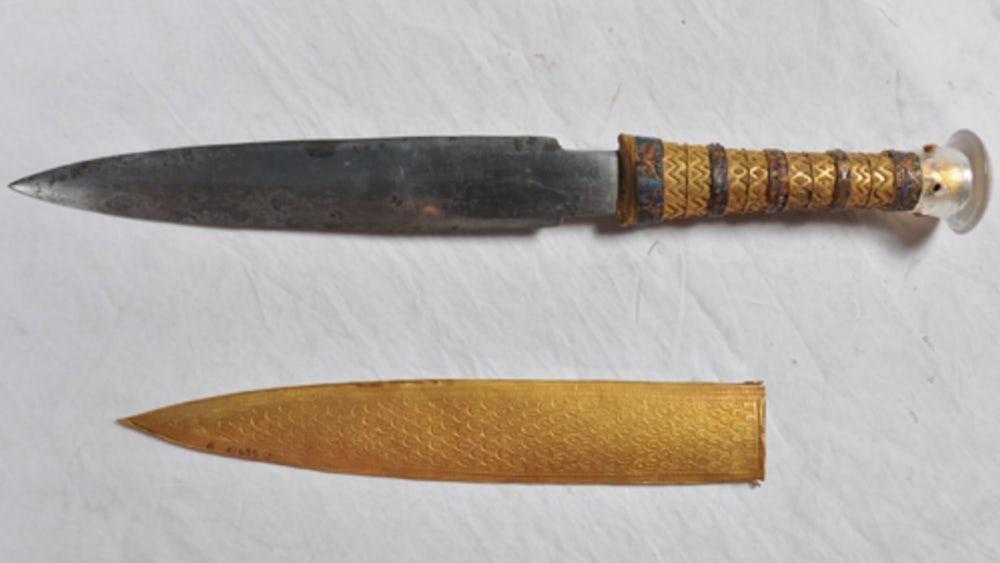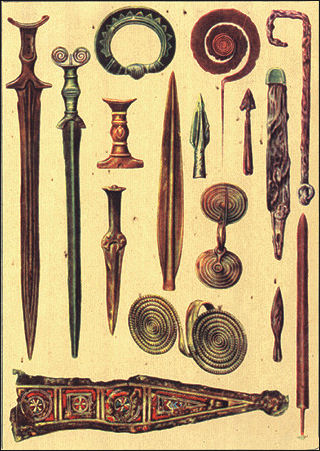The Dawn of Warfare and Human Ingenuity
Picture this: over 2.5 million years ago, a human picks up a sharp stone for the first time. It’s not just a rock—it’s a tool, a weapon, and a symbol of survival. This simple act marked the beginning of humanity’s relationship with weapons, a journey that would shape civilizations, cultures, and the very course of history. From rudimentary stones to sophisticated swords, ancient civilizations were the cradle of weapons technology. This article explores how early humans transformed simple tools into instruments of war, reflecting their ingenuity, adaptability, and desire for dominance.

Source: OER Project
The Stone Age: From Rocks to Tools
The story of weapons begins in the Stone Age, where sharp stones, wooden spears, and clubs were humanity’s first tools for hunting and self-defense. These early weapons were born out of necessity, helping humans survive in a world filled with dangers. Over time, they evolved from hunting tools to instruments of war. The discovery of fire and techniques for sharpening stones revolutionized weapon-making, making tools more efficient and deadly.
Weapons in the Stone Age were more than just tools—they were symbols of power and protection. A well-crafted spear or club could mean the difference between life and death. Interestingly, the basic principles of these early weapons, like strength and precision, remain unchanged even in modern tools like knives and hammers.

Source: The Classroom
The Bronze Age: The Birth of Metal Weapons
The next leap in weapons technology came with the discovery of bronze, a durable alloy of copper and tin. This marked the beginning of the Bronze Age, around 3300 B.C. Bronze weapons, such as swords, axes, and shields, were stronger and more versatile than their stone counterparts. Civilizations like Mesopotamia, Egypt, and the Indus Valley embraced this innovation, giving rise to professional armies and structured warfare.
Bronze weapons weren’t just tools of war—they were works of art. Legendary swords like those wielded by ancient warriors became symbols of power and prestige. The mastery of metallurgy allowed civilizations to create weapons that were not only functional but also culturally significant.

Source: New Atlas
The Iron Age: The Game Changer
The Iron Age brought another revolution in weapons technology. Iron, stronger and more abundant than bronze, became the material of choice for weapons. Civilizations like the Hittites, Greeks, and Romans adopted iron weapons, which were more durable and effective in battle. This technological leap changed the dynamics of warfare, enabling the rise of powerful empires.
Iron weapons became symbols of empire-building and dominance. The Roman gladius, for example, was a fearsome weapon that helped Rome conquer vast territories. The spread of iron weapons across civilizations marked a turning point in military history, paving the way for more advanced warfare strategies.

Source: Facts and Details
The Role of Weapons in Ancient Societies
Weapons in ancient societies were more than just tools of war—they were symbols of status, power, and identity. Elite warriors often carried ornate weapons, showcasing their wealth and influence. Weapons also played a significant role in mythology and rituals. Thor’s hammer and King Arthur’s Excalibur are just a few examples of how weapons became intertwined with cultural and spiritual beliefs.
The Legacy of Ancient Weapons in Modern Times
The legacy of ancient weapons lives on in modern military technology. The principles of weapon-making—strength, precision, and adaptability—remain the same, even as materials and designs have evolved. Ancient innovations continue to inspire modern tools, from combat knives to advanced firearms.
Moreover, the cultural impact of ancient weapons is undeniable. They appear in literature, movies, and video games, captivating audiences with their rich history and symbolism. The journey from stone to iron is a testament to human ingenuity and our enduring quest for innovation.

Source: History.com
Conclusion: The Epic Journey of Weapons Technology
From sharp stones to iron swords, the evolution of weapons technology is a fascinating reflection of human history. Ancient civilizations laid the foundation for modern warfare, demonstrating the power of innovation and strategic thinking. Weapons have shaped human societies, from survival tools to symbols of power, and their legacy continues to influence the world today. The next time you hold a knife or watch a historical movie, remember the epic journey that brought us here.
References:
The Iron Age – link
Iron tools from the Bronze Age found to have otherworldly origins – link
Tools & Weapons Created During the Bronze Age – link
Stone Age and Bronze Age Weapons and Forts – link
5 Iron Age Tools and Innovations – link
Categories: Ancient Civilizations, History, Technology, War History
Tags: Ancient Civilizations, Bronze Age, History, Iron Age, Stone Age, Warfare, Weapons Technology
Religion: N/A
Country of Origin: World
Topic: Evolution of Weapons Technology in Ancient Civilizations
Ethnicity: N/A

